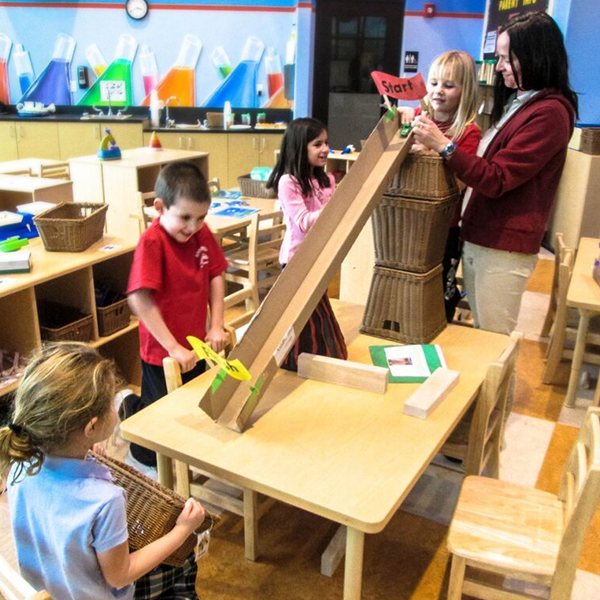Children's Learning Adventure
Dec 11, 2019
STEM to STEAM
Why the Arts are a Critical Addition to STEM Learning
"The greatest scientists are artists as well," Albert Einstein once famously declared. As an accomplished violinist and pianist as well as one of the world's greatest physicists, Einstein knew what he was talking about.
When people were first introduced to STEM (Science, Technology, Engineering and Mathematics), the combination made sense. However, when STEM transformed to STEAM (Science, Technology, Engineering, Art and Mathematics), there were questions. What could art possibly have to do with science, technology, engineering and mathematics?
Quite a lot, it turns out.
STEAM Encourages Creativity
Creativity, the same skill at the center of our most celebrated works of art, is as essential as knowledge to the success of our greatest scientists, engineers and mathematicians.
In fact, Nobel Prize winners are 15 to 25 times more likely to be artistic than an average scientist.
It just might be, as Einstein also once argued, creativity is more critical than knowledge.
STEAM Inspires Communication and Collaboration
Many of the world’s recent scientific, technological, engineering and mathematics innovations are the product of teams rather than individuals. Successful collaboration involves individuals working together through often conflicting ideas and agendas. Dancers, music bands and actors all collaborate when they create. These artists work together to create something much greater than the sum of its parts.
To learn to collaborate successfully, children need to develop communication skills. The arts can help here, as well. Music is a form of communication as are writing, oration and painting. The social scientists also encourage debate and dialogue. Children learn to both articulate and defend their opinions so that they become confident and active collaborators.
STEAM Develops Visual Imaging Ability
One of the best indicators of scientific success is the ability to visualize. This includes the ability to observe and perceive but also the ability to envision by creating mental images. Studies have shown that children who are introduced to a variety of artistic mediums develop the ability to better understand visual information.
This ability to visualize is also tied closely to a child’s ability to imagine the possibilities, whether those possibilities are in art or the field of science, technology, engineering or mathematics.
Alan Turing, the famous mathematician who both broke the German Enigma code and laid the groundwork for the creation of computers, understood the power of imagination. “Those who can imagine anything,” he once said, “can create the impossible.”
STEAM Enhances Flexibility and Adaptability
The vast majority of children will eventually work in jobs that do not even exist today. That will require them to learn to be flexible and adaptive. But flexibility and adaptability are also critical components of problem-solving.
The world’s greatest scientists understand that if one approach to solving a problem doesn’t work you don’t quit; you try something else. Arts education encourages children to engage and to persist in the face of frustration. Most arts take time to master and involve trial and error, failure and frustration and a lot of practice. Just ask any pianist, dancer or writer.
Art also encourages children to take risks, to make mistakes and to play around with all of the possibilities. It reinforces the scientific principles of hypothesis, experiment and proof.
STEAM Fosters Problem Solving and Innovation
Scientists, technologists, engineers and mathematicians look to solve people’s problems. This could be something as simple as designing a wireless TV set to creating a complex habitat that will allow us to survive on other planets. Exposure to the arts lays the ground for innovation and problem-solving.
Apple is a well-known innovator, and its founder Steve Jobs has frequently argued that technical skill alone does not foster innovation. “It’s in Apple’s DNA that technology alone is not enough – that it’s technology married with liberal arts, married with the humanities, that yields us the result that makes our heart sing.”
The Link Between Science and Art
Studies have found a profound link between early exposure to the arts and scientific ability. In fact, many of the most critical scientific skills are the same skills children learn through art: observation, imaging and visualization, abstract thinking, modelling and even manual dexterity.
These same skills are critical to success in technology, engineering and math.
Think about it. The same dexterity that allows a child to paint fine lines will also enable her to hardwire robotics.
Like many individuals who are highly successful in their fields, the world’s greatest scientists tend to be polymaths, people with wide-ranging interests and knowledge. The same quest for knowledge that drove Einstein in science also fueled his interest in music and other artistic endeavors.
STEAM is a way to ensure we encourage polymaths, develop skills and foster a love for learning in all our children, potential Nobel Laureates or not. Learn more about about our STEAM learning program by planning a visit.
Stem Preschool
Early Education
Steam Learning
preschool science
preschool technology
